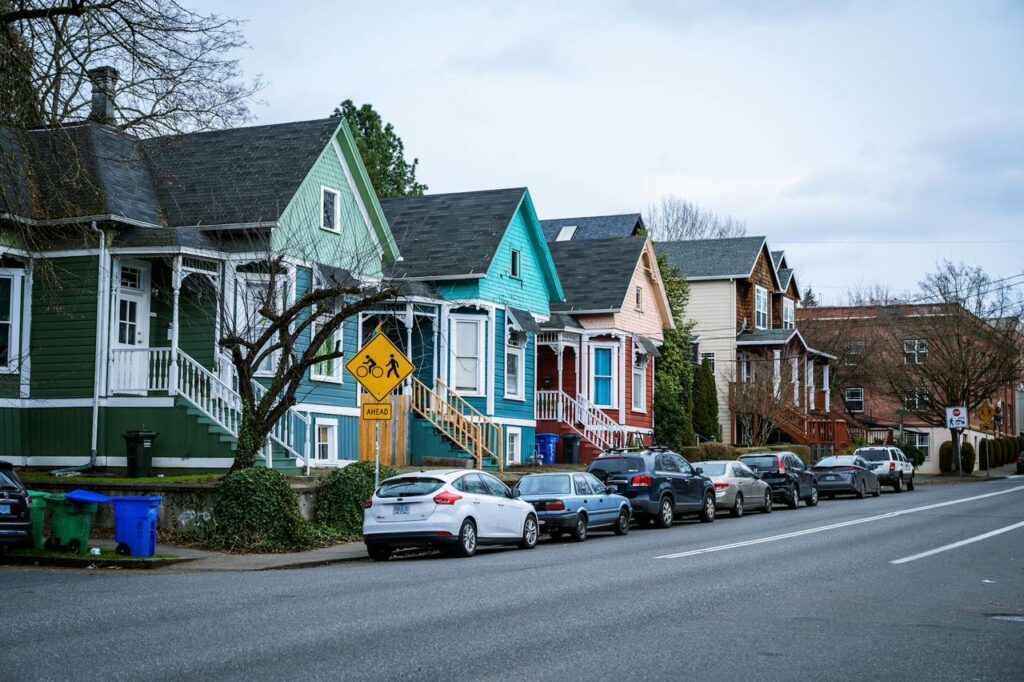
The U.S. housing market is one of the most complex and dynamic in the world. Rising interest rates, inflationary pressures, and shifting migration patterns have created wide disparities in what homebuyers and investors can expect for their money. With a budget of $500,000, the experience of purchasing a home differs dramatically depending on location. In cities with strong job markets and limited supply, half a million dollars may only secure a modest condominium. In other regions with lower demand or more available land, the same budget can stretch into spacious single-family homes or even luxury properties.
For buyers and investors alike, recognizing these differences is critical to making sound real estate decisions. In this article, we examine what $500,000 can buy across five very different American cities like San Francisco, California; Austin, Texas; Atlanta, Georgia; Cleveland, Ohio; and Miami, Florida. Along the way, we explore why prices vary, what trade-offs buyers face, and what lessons investors can draw from these comparisons.
For readers interested in broader real estate trends, we also recommend exploring our insights on emerging real estate markets and the future of suburban development in America.
Why Home Values Vary by Market
Local Economy and Job Growth
Housing markets are closely tied to employment opportunities. In cities such as San Francisco, California, and Austin, Texas, the tech industry has created a surge in demand for housing, driving prices far above national averages. Buyers in these regions often pay a premium for proximity to high-paying jobs. By contrast, Cleveland, Ohio offers far lower home prices because its job market, while steady, does not generate the same level of competition for housing.
According to Bureau of Labor Statistics data, job growth in Austin has consistently outpaced the national average. This influx of workers puts pressure on available housing, raising both rents and home values. In San Francisco, despite recent tech layoffs, long-term demand for housing remains elevated because of limited land and global recognition as a business hub.
Supply and Demand Dynamics
Supply and demand play a central role in shaping affordability. Miami, Florida, provides a striking example. The city’s coastal location restricts new development, while international buyers and retirees continue to flood the market. This creates competitive bidding wars, often making a $500,000 budget insufficient for prime neighborhoods.
In contrast, cities with more land and slower population growth such as Cleveland maintain a greater balance between supply and demand. The abundance of housing keeps prices more affordable, enabling buyers to access larger homes with the same budget.
Geographic and Lifestyle Factors
Beyond economics, lifestyle preferences shape value. Coastal markets like Miami and San Francisco attract buyers seeking climate advantages, cultural amenities, and international connectivity. Atlanta, Georgia, appeals to families and young professionals with its balance of affordability, space, and urban energy. Austin draws those interested in both quality of life and career advancement, particularly in tech and creative fields.
These geographic and lifestyle differences highlight why identical budgets produce vastly different results. For further reading on U.S. housing conditions, the U.S. Census Bureau Housing Vacancies and Homeownership report offers valuable national data.

City Comparisons: What $500K Gets You in 5 Markets
San Francisco, California
In San Francisco, a budget of $500,000 typically buys a one-bedroom condominium or a small townhouse. Properties at this price point are often located in older buildings, and square footage is limited. The appeal lies less in the size of the property and more in its location—walkable neighborhoods, access to public transit, and proximity to Silicon Valley employment centers.
The trade-off for buyers is living in compact quarters while paying a premium. However, the investment case remains strong because San Francisco continues to experience long-term appreciation and rental demand. Many buyers entering the market view such purchases as stepping stones toward larger properties later.
Austin, Texas
Austin offers significantly more value. With $500,000, a buyer can secure a modern three-bedroom single-family home with a yard in many of the city’s suburban neighborhoods. Developments in areas like Round Rock or Pflugerville provide newer construction, community amenities, and access to quality schools.
Austin’s growth as a tech hub has pushed prices upward in recent years, but compared to California, homes remain relatively affordable. Buyers enjoy greater space, newer finishes, and strong appreciation potential. The trade-off is that as Austin becomes more competitive, affordability challenges are beginning to emerge, especially for first-time buyers.
Atlanta, Georgia
In Atlanta, $500,000 stretches further than in many coastal cities. Buyers can often purchase a spacious four-bedroom suburban home with modern upgrades. Alternatively, they might choose a stylish townhouse or condominium in trendy intown neighborhoods such as Midtown or Old Fourth Ward.
Atlanta’s economy benefits from a diverse base, including corporate headquarters, logistics, and a booming film industry. Strong rental demand adds to the investment appeal, making Atlanta attractive for both homeowners and real estate investors. Buyers here benefit from affordability, space, and urban amenities, creating a balance that few markets can match.
Cleveland, Ohio
Cleveland stands out for its affordability. A $500,000 budget allows buyers to acquire a large, renovated historic home or a luxury downtown condominium with premium amenities. These homes often feature architectural character, expansive square footage, and desirable locations near cultural districts.
The trade-off is slower appreciation compared to faster-growing regions. While Cleveland offers affordable luxury and an attractive quality of life, investors may see lower long-term returns. However, for buyers seeking value, lifestyle, and stability, Cleveland represents one of the best opportunities in the country.
Miami, Florida
In Miami, a budget of $500,000 typically secures a one-bedroom condominium or a modest modern home in suburban areas such as Homestead or Doral. Waterfront and downtown properties are often out of reach at this price point, but suburban neighborhoods provide access to good schools and community amenities.
Miami’s appeal lies in its lifestyle advantages. Warm weather, beaches, nightlife, and cultural diversity make it one of the most desirable destinations in the country. At the same time, risks exist. High insurance costs, hurricane exposure, and rising competition from international buyers present challenges. Despite these risks, Miami remains one of the strongest lifestyle-driven housing markets in the United States.

Key Takeaways for Buyers and Investors
Location Shapes Value
A $500,000 budget has different meanings across U.S. markets. In San Francisco and Miami, buyers trade space for access to vibrant economies and lifestyles. In Cleveland and Atlanta, the same budget delivers far larger properties. Understanding local market realities is crucial for setting expectations.
Know Your Priorities
Homebuyers must align their purchase decisions with personal priorities. Professionals seeking career growth may value a smaller home in San Francisco or Austin, while families may prioritize the spacious homes available in Atlanta or Cleveland. Retirees and lifestyle-driven buyers often choose Miami despite its higher risks.
Investor Angle
Investors must weigh rental demand, appreciation potential, and risk. Austin and Atlanta stand out for combining affordability with strong growth prospects. Miami remains attractive for international and lifestyle-driven buyers, though risks must be managed carefully. Cleveland, while slower in appreciation, offers opportunities for buyers seeking affordable entry into premium real estate.
For those exploring tax-efficient strategies in real estate, see our detailed post on cost segregation.
Conclusion
The meaning of $500,000 in the U.S. housing market depends entirely on location. In San Francisco, California, it may mean a compact condominium close to major employers. In Austin, Texas, it may translate into a spacious suburban home with modern finishes. In Atlanta, Georgia, the same budget secures either a large family property or an in-town townhouse. Cleveland, Ohio, offers luxury and space at a fraction of coastal prices, while Miami, Florida, provides access to one of the most vibrant lifestyle markets in the country, albeit with risks.
For buyers, the key is aligning housing choices with personal needs and financial capacity. For investors, the lesson is to identify where supply, demand, and long-term trends intersect.
As the housing market continues to evolve, understanding these regional variations is more important than ever. Half a million dollars will always mean different things in different places. By analyzing the economic, geographic, and lifestyle drivers behind housing prices, buyers and investors can position themselves for smarter, more profitable decisions.
For more expert insights into real estate trends and investment opportunities, visit our Real Estate Talks homepage.


